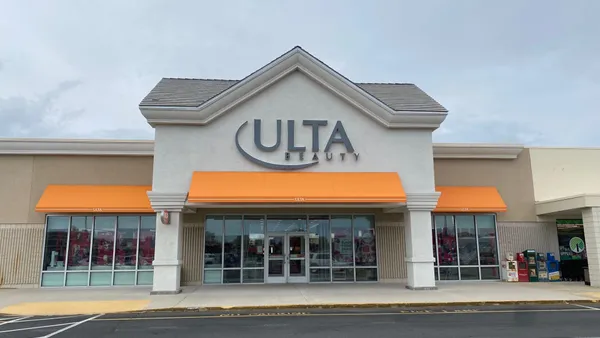Dive Brief:
-
Sears Holding Corp. is accelerating the closure of more than 30 Sears and Kmart stores early this year, sources including company employees told Business Insider. Several local news outlets by the weekend also published reports of area Sears or Kmart stores closing.
-
That effort brings the number of stores that Sears (which recently reported its 20th straight quarterly sales and revenue miss) has closed this fiscal year to more than 200, according to Business Insider, which also published a list of the stores. The closures would leave Sears with fewer than 1,500 stores, down some 60% from 2011, when the company ran 3,500-plus stores by Business Insider’s measure.
-
Sears Holdings on Dec. 29 also announced that it has obtained a $200 million secured standby letter of credit facility provided by CEO Edward Lampert’s ESL Investments hedge fund to fund its operations.
Dive Insight:
For years now, announcements from Sears Holding Corp. — whether it’s refuting store closings, announcing store closings, floating the idea of selling its iconic sub-brands, or simply releasing its earnings reports — usually launch a barrage of news stories about its impending demise.
But in a report mailed to Retail Dive last month, Debtwire analysts noted a potential change in tone from Sears executives that could suggest the once-iconic retailer is beyond the brink. That report highlighted Sears earnings reports in which the company underscores its intent not to borrow money to fund continued operating losses, but rather to “provide flexibility.”
“In reading the tea leaves, we compare this comment made in 2Q: ‘...as it relates to funding our transformation, we continue to focus on the funding of our transformation while meeting all of our financial obligations,’ to this one in 3Q: ‘We believe that we have the resources to fund our transformation and meet all of our financial obligations,’” the Debtwire report reads. “The intent behind the two statements may be the same, but we wonder if there is a subtle shift in tone when considered with the new language of not funding losses.”
Sears has touted its ambitions to become an “asset-light” company and to focus on becoming a “member-focused” one, and, in a statement on the new credit line last week, CFO Jason M. Hollar reiterated that stance.
"As Sears Holdings has consistently shown, we will take actions to adjust our capital structure, generate liquidity and manage our business to enable us to execute on our transformation while meeting all of our financial obligations,” Hollar said. “This new standby letter of credit facility further demonstrates that Sears Holdings has numerous options to finance our business strategy.”
But as Debtwire analysts note in their report, it’s not clear what that really means. In practice, it has meant a dominoes-like falling of Sears stores, which have for years in many areas have been neglected and unappealing, as well as the prospect of spinning off its still-strong Craftsman, Kenmore and DieHard brands.
To Neil Saunders, CEO of retail research agency and consulting firm Conlumino, that is a retail disaster akin to the Titanic. “While Sears was once a titan of U.S. retail, it now looks set to sink,” Saunders wrote in an email to Retail Dive last month. “We do not make these claims lightly, but only on the back of the evidence available. First, the top line has been in decline for as long as anyone can remember. Comparable sales have been on the slide for just over 11 years. This [most recent] quarter shows no sign of even the mildest of improvements."
Saunders also notes that while Sears executives continue to maintain they are committed to restoring the group to profitability, "there is no evidence to suggest this is happening," adding "In order to fund these losses Sears is monetizing its assets — in other words it is selling off chunks of the business to fund day-to-day operations … The problem with this approach is that the funds raised are not being used to develop or grow the firm, they are being used to prop up an ailing and failed business.”
Finally, Sears' turnaround strategy is “severely lacking,” Saunders said. "Quite simply they are badly run, badly managed and they are places that shoppers are abandoning in ever greater numbers. In our view, it is now too late to turn this around. The rot has well and truly set in and it is just not financially feasible to reverse it.”














